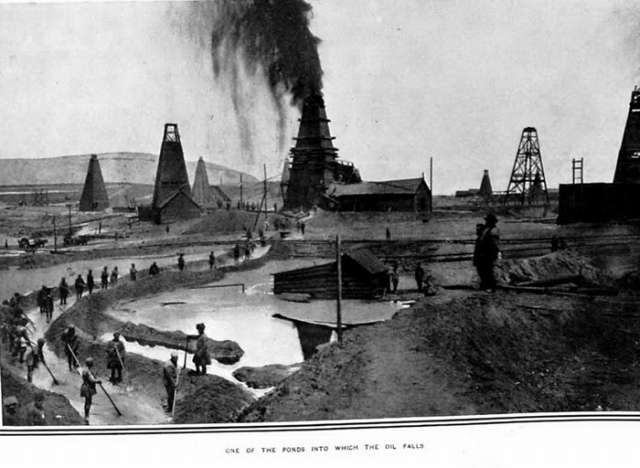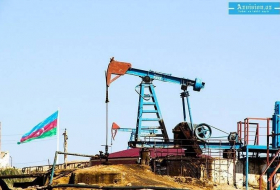By the 19th century, Azerbaijan was by far the frontrunner in the world`s oil and gas industry. In 1846 - more than a decade before the Americans made their famous discovery of oil in Pennsylvania - Azerbaijan drilled its first oil well in Bibi-Heybat. By the beginning of the 20th century, Azerbaijan was producing more than half of the world`s supply of oil.
During its early Oil Boom, between 1885 and 1920, Azerbaijan benefited greatly from the expertise of well-known chemists and geologists from Europe and Russia.
Baku`s rich oil barons sought out the best advice that the scientific world had to offer, seeking recommendations from important figures like German chemist Carl Engler and Russian chemist Dmitry Mendeleyev. As a result, innovative new techniques such as rotary drilling and gaslift were tested for the first time in Azerbaijan.
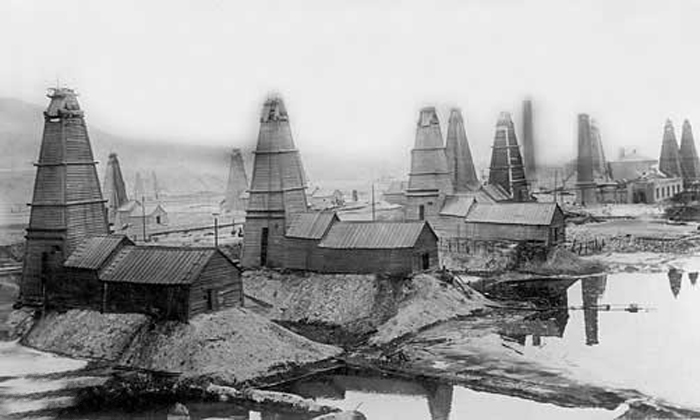
Scientists and travelers of the Middle Ages repeatedly noted in their works some information over the oil production in Azerbaijan and over the great profits of this unique product.
However, in this period ol was used only as a fuel in daily life, and for medical and military purposes. Industrial revolution in the XVIII-XIX centuries rapidly increased demand to oil and made it a strategic product of great importance for the development of the country. Oil “boom” began over the world.
Tehere was a flow of foreign investment to the oil production in Azerbaijan. Besides being a city with old oil extraction traditions, Baku became the discovery and initial apply zone of the modern rechnology in the fields of excavation, oil extraction and oil refining. In the mid-XIX century, there was a turning point in oil production, the first oil well was drilled in Bibiheybet in 1947, and later the first well with new technology was drilled in Balakhani. In 1901, Azerbaijan was in the first place in the world with 11.5 million tons of oil production (9.1 million tons of oil were extracted in USA in the same year).
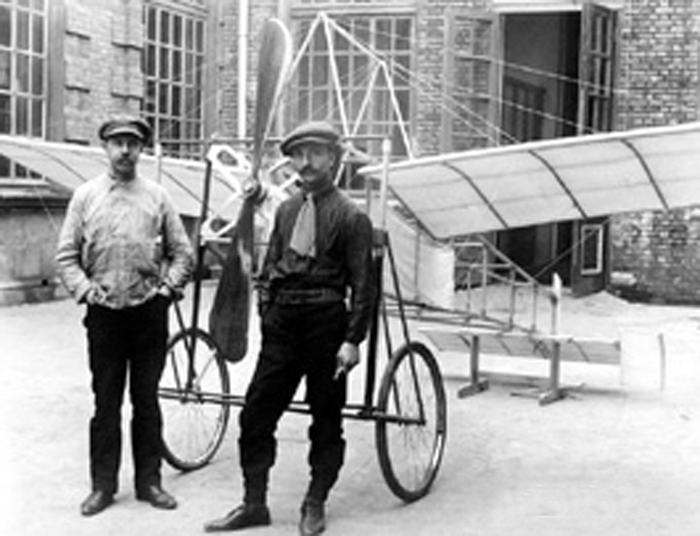
Beginning from 70s of the XIX century, there was a great flow of foreign capital in to Azerbaijan oil industry. The development of oil industry formed a great generation of local entrepreneurs.
The second stage of oil extraction began after the nationalization of Azerbaijan oi industry in 1920 and covers the discovery period of “Oil Rocks” field in the open sea. In connection with the extension of exploration, several new oil fields were discovered and put into operation (especially Qala, Buzovna-Mashtaga, etc) and oil extraction reached 23.6 million tons in 1941, and in this period it comprised 76% of total oil production in the USSR.
In 1941, maximum amount of oil in the oil production history of Azerbaijan- 23.5 million tons were extracted and this was nearly 71.4% of former Soviet Union oil. Such a high level of production ensured USSR’s victory in the World War II, increased special role of oil in the solution of many problems of national economy.
Offshore oil production began for the first time in Azerbaijan and fields, such as “Gurgan-deniz”, “Pirallahi”, “Chilov adasi” were consecutively exploited in Azerbaijan sector of the Caspian Sea. On November 7, 1949, the discovery of “Oil Rocks” in the open sea, 40 km apart from the shore and 90 km apart from Baku made Azerbaijan and the Caspian famous throughout the world.
In 1950, with the start of exploitation of the “Oil Rocks”, the development of Azerbaijan offshore oil industry took start and continued till 1969. Offshore geological exploration extended and several oil and gas deposits were discovered and developed at this stage. Techniques and technology of offshore excavation (of exploration excavations), of the construction of hydraulic oil rigs, and infrastructure of offshore oil extraction developed as well.
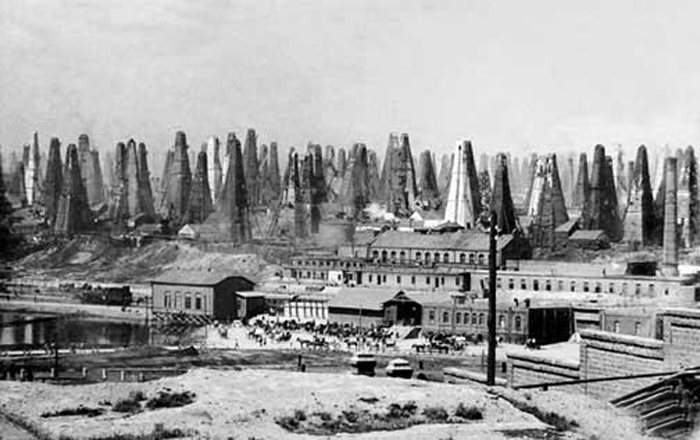
Several new oil and gas condensate fields were found and developed on the shore in this period (Kurovdag, Misovdag, Kursenge, Garabakhli, Qalmaz, Garadagkh, etc). This period is mainly characterized with the intensive development of “Oil Rocks” and other deposits. For the first time in the world practice, offshore field was constructed over the piles in the open sea. Complex engineering and scientific-technical measures made possible to save a great deal of capital investment and metal, and allowed to increase productivity, to reduce the cost of each ton of oil.
“Caspianoil” Production Union (PO) was founded in 1970.
Until this date, the technical facilities used in the Caspian allowed to exploit the fields up to 40 meters. In that period, all oil-gas deposits in the depth of 40 meters were already explored in the Azerbaijan sector of the Caspian. The increase in the offshore oil and gas production was connected with deeper oil and gas deposits.
In 1970-1980, more than 400 vessels of 75 types, such as crane vessels, seismic, passenger and ohter types were brought to Azerbaijan. “Azerbaijan” crane ship with 2500 tons of capacity started operating in the Caspian.

After the purchase of “Khazar” self-lifting drilling rig to carry out exploration operations in the depth of 70 m offshore, later with the purchase of “shelf” semi-submersible drilling rig that carried out operations in the depths beyond 200 meters offshore, it was possible to discover rich oil and gas deposits in deeper waters. 8 new oil and gas fields were discovered at the late 60s, oil resources increased 2, gas resources 3 times.
General production of oil and gas reached 27.1 million tons (conventional fuel) in 1975. In the 80s, the number of floating drilling rigs reached 11 and as a result rich oil deposits were discovered at depths of 80-350 m that include the main portion of Azerbaijan oil (Guneshli, Chirag, Azeri, etc).
In the late 1970s – early 1980s, the world-famed offshore fields at the depth of 80-350m– “Azeri”, “Chirag”, “Kepez”, and “Guneshli” field that provides more than 60% of SOCAR oil, were discovered.
On September 20, 1994, an Agreement (later called “Contract of the Century”) was signed on the “joint” development and production sharing of “Azeri”, “Chirag”, “Guneshli” (deepwater) fields in the Azerbaijan sector of the Caspian. 11 large companies from 8 countries signed the Contract.
Another event of great importance in the history of independent Azerbaijan Republic happened on April 17, 1999. Baku-Supsa oil pipeline and Supsa export terminal in the Black Sea Coast in Georgia were put into operation with the Participation of the Presidents of Azerbaijan, Georgia and Ukraine. The oil extracted from the “Chirag” field was now exported to the world market from the Supsa port. So Azerbaijan oil for the first time was sent not to the north, but to the west.
On November 18, 1999, in the course of Istanbul summit of OSCE, the Presidents of Azerbaijan, Georgia and Turkey signed an agreement on the “Transportation of crude oil via the Baku-Tbilisi-Jeyhan main export pipeline through Azerbaijan Republic, Georgia and Turkey Republic”.
At the same time Azerbaijan Republic, Georgia and Turkey Republic, Kazakhstan Republic and USA signed “Istanbul Declaration” to support that project. This was a huge step in order to ensure long-term political, economic interests of Azerbaijan, to realize large-scale international co-operation and to establish peace, stability and security in the region as well.
To sign such a Contract with the oil companies of powerful and leading world countries was a great success for Azerbaijan people. The Contract increased belief of world countries in Azerbaijan and created favorable conditions for the investments of large and famous oil companies.
State Oil Fund of Azerbaijan Republic (SOFAR) was founded in 2001. The profits gained from oil are collected to the Fund. The main object of the fund is to ensure fair distribution of natural resources between present and future generations. Another important aspect is to ensure macro-economic stability and to protect local pecuniary market against the increasing flow of foreign capital.
Now, 24000 tons of oil are produced per day in Azerbaijan. The prognosis is that, general profit of oil and gas production and export will be nearly 200 billion USD in 20 years.








